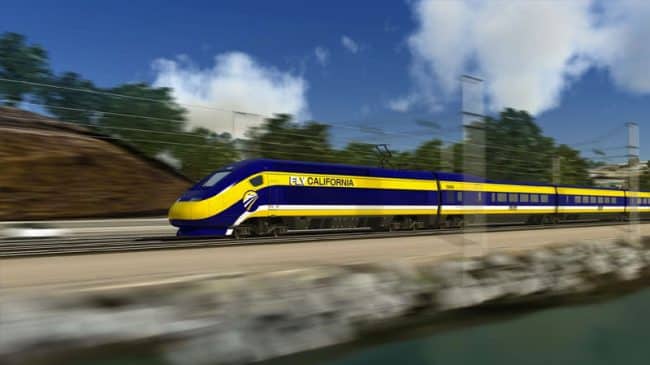The California High-Speed Rail Authority’s newly approved 2016 business plan concedes that the state lacks funding to build the full high-speed rail system. The latest version of the plan shows the state is at least $30 billion short of the funding required to build the project. But, in making the latest changes to the plan, the California High Speed Rail Authority may be finally starting to acknowledge some of the fiscal and political realities of the project.
California leaders have long dreamed of private financing and federal funding arriving at the state’s doorstep to pay for the train system connecting Los Angeles and San Francisco. However, since there has been no private financing, no additional federal funding on the horizon, and the CHSRA can use only 25 percent of revenue the state generates from its anti-global-warming cap-and-trade program, the high-speed rail plans are changing again.
The new business plan once again alters the order of construction, with the section between the Central Valley and San Jose now set to be built before the section in Southern California. But in an attempt to appease Southern California, since the new plan ensures the high-speed train won’t appear here for decades, CHSRA says it will spend $4 billion in the region, mostly on grade separations and improvements at Union Station in Los Angeles.
It appears the squeaky wheels in Central Valley were just too loud for the authority to ignore. After earlier deciding to drop a stop in Merced already under construction, the agency backtracked and announced that it would keep building that stop. Politically, the high-speed rail project needs all the help it can get and it appeared Central Valley politicians might ditch their support for the project if their region didn’t get what it wanted.
So while stops in Los Angeles and Orange County would serve millions of residents and draw far more riders than a stop in Merced County, where approximately 250,000 people live, the political support from Central Valley politicians took priority ahead of passengers and common sense.
“We need to look at this as a tool to help us rebuild many of these cities in the Central Valley,” CHRSA Chairman Dan Richard explained.
Rebuilding cities in the Central Valley wasn’t what taxpayers were originally sold. They were promised a bullet train running from Los Angeles to San Francisco in under three hours. But that won’t happen. The rail system is now being viewed a jobs program, not a bullet train focused on moving large numbers of people at high speeds.
The Fresno Bee reports that Central Valley politicians were adamant about getting the stop because they view it as a way to attract another “golden goose” that will help land the region more state government jobs.
“Madera County leaders also expressed hope that having the Amtrak-HSR connection could bolster the county’s chances for being selected as a site for a heavy maintenance facility for the statewide high-speed rail system,” the Bee reported. “Valley counties from Merced to Kern have pitched locations for such a facility, which is eyed as a potential economic golden goose because of the estimated 1,500-plus jobs it could generate to service the trains.”
The new high-speed rail business plan also revealed the flimsy house of cards the alleged sources of funding for the train are built upon.
In the business plan, the authority claimed it has managed to reduce the cost of building Phase 1, which will now run from Central Valley to San Jose, to $20.7 billion. The full system cost estimates have been lowered slightly, from $67.7 to $64.2 billion. That’s not really a cost reduction for taxpayers when you consider CHSRA claimed in 2011 that the cost for the entire statewide train system would be $35 billion.
Where will that money come from? The state still doesn’t know. “If we continue to receive funds, we can open America’s first operating high-speed rail and connect two really important regions of the state,” Chairman Richard said.
That’s a really big “if” and shows the uncertainty around the high-speed rail project. But one thing is certain – taxpayers are getting a raw deal.
Baruch Feigenbaum is assistant director of transportation policy at Reason Foundation. This article originally appeared in the Orange County Register.

